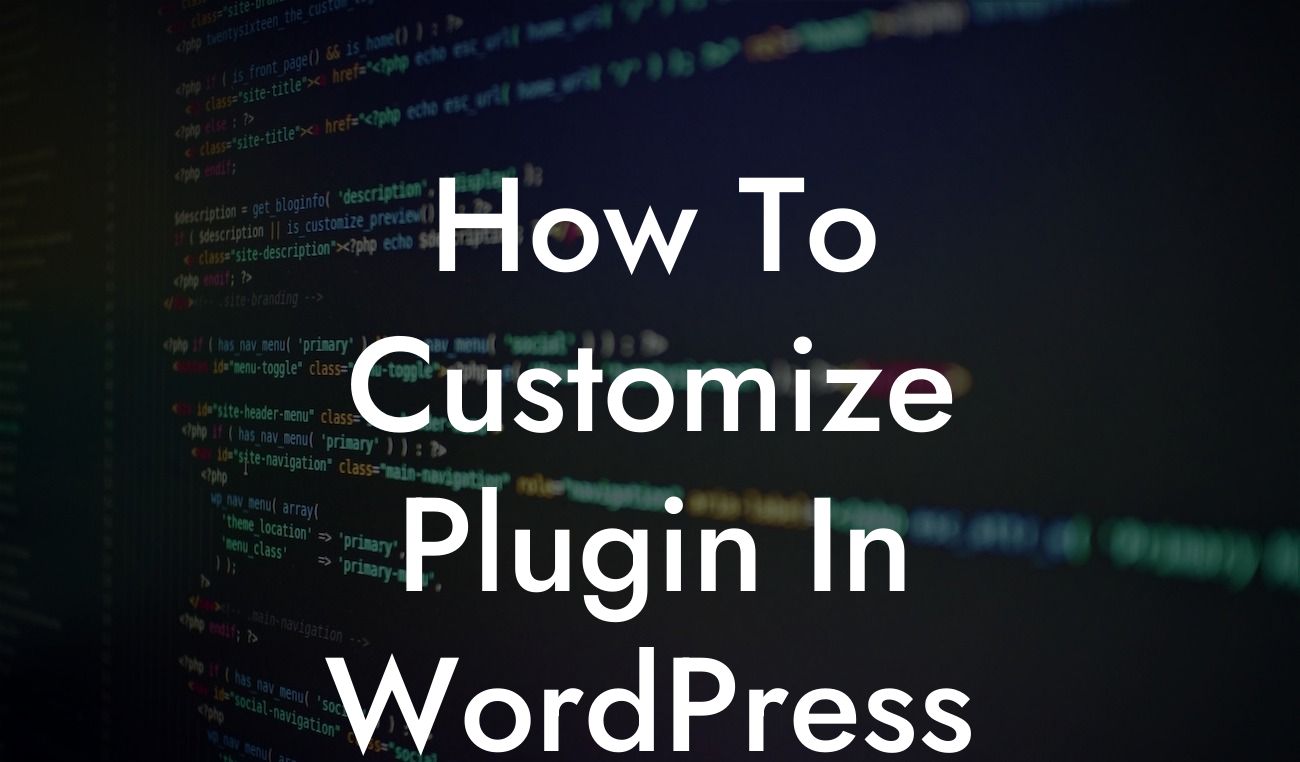Looking to customize a plugin in WordPress? You've come to the right place! At DamnWoo, we understand the importance of having a unique online presence that reflects your brand and values. In this blog post, we will guide you through the process of customizing a plugin in WordPress, allowing you to tailor its functionality to suit your specific needs. Say goodbye to generic solutions and hello to a truly personalized experience!
Customization is key when it comes to standing out from the crowd, and WordPress makes it incredibly easy to modify existing plugins. Follow these steps to get started:
1. Identify the Plugin:
The first step is to identify the plugin you want to customize. It could be a popular plugin from the WordPress repository or a premium plugin purchased from a third-party developer. Make sure to install and activate the plugin before proceeding.
2. Create a Child Theme:
Looking For a Custom QuickBook Integration?
To ensure that your customizations remain intact even after plugin updates, it's crucial to create a child theme. This allows you to make changes without modifying the original plugin files directly. Refer to the WordPress Codex or consult a developer for guidance on creating a child theme.
3. Locate the Plugin Files:
Once you have a child theme in place, locate the plugin files that you want to modify. These usually reside in the "wp-content/plugins" directory. Find the specific file that contains the functionality you wish to customize, such as a PHP file or a CSS stylesheet.
4. Understand the Plugin Structure:
Before diving into customization, it's important to understand the plugin's structure and documentation. This will help you identify the areas you can modify and prevent any unintended consequences. Read the plugin's documentation thoroughly or reach out to the developer for any clarification.
5. Modify the Plugin:
Now comes the fun part! You can start making changes to the plugin files within your child theme. This could include adding new features, modifying existing functions, or customizing the design through CSS. Use suitable HTML tags, H2, H3 headings, bullet point lists, and ordered lists to organize your code and make it more readable.
How To Customize Plugin In Wordpress Example:
Let's say you have a restaurant website and want to customize a reservation plugin to match your brand's colors and fonts. Using CSS, you can target the plugin's elements and override their default styles. For instance, you can change the background color, font family, and button styles to align with your website's theme. Additionally, you can modify the plugin's functionality to cater to specific needs, like integrating it with a payment gateway or sending automated confirmation emails.
Congratulations on successfully customizing your WordPress plugin! With the power of customization, you've unlocked endless possibilities to elevate your online presence and provide a unique user experience. Don't forget to share this article with others who may find it helpful. Take a moment to explore other guides on DamnWoo, where we empower small businesses and entrepreneurs with extraordinary digital solutions. And if you're looking for more customizability, try one of our awesome plugins to further enhance your WordPress website.













